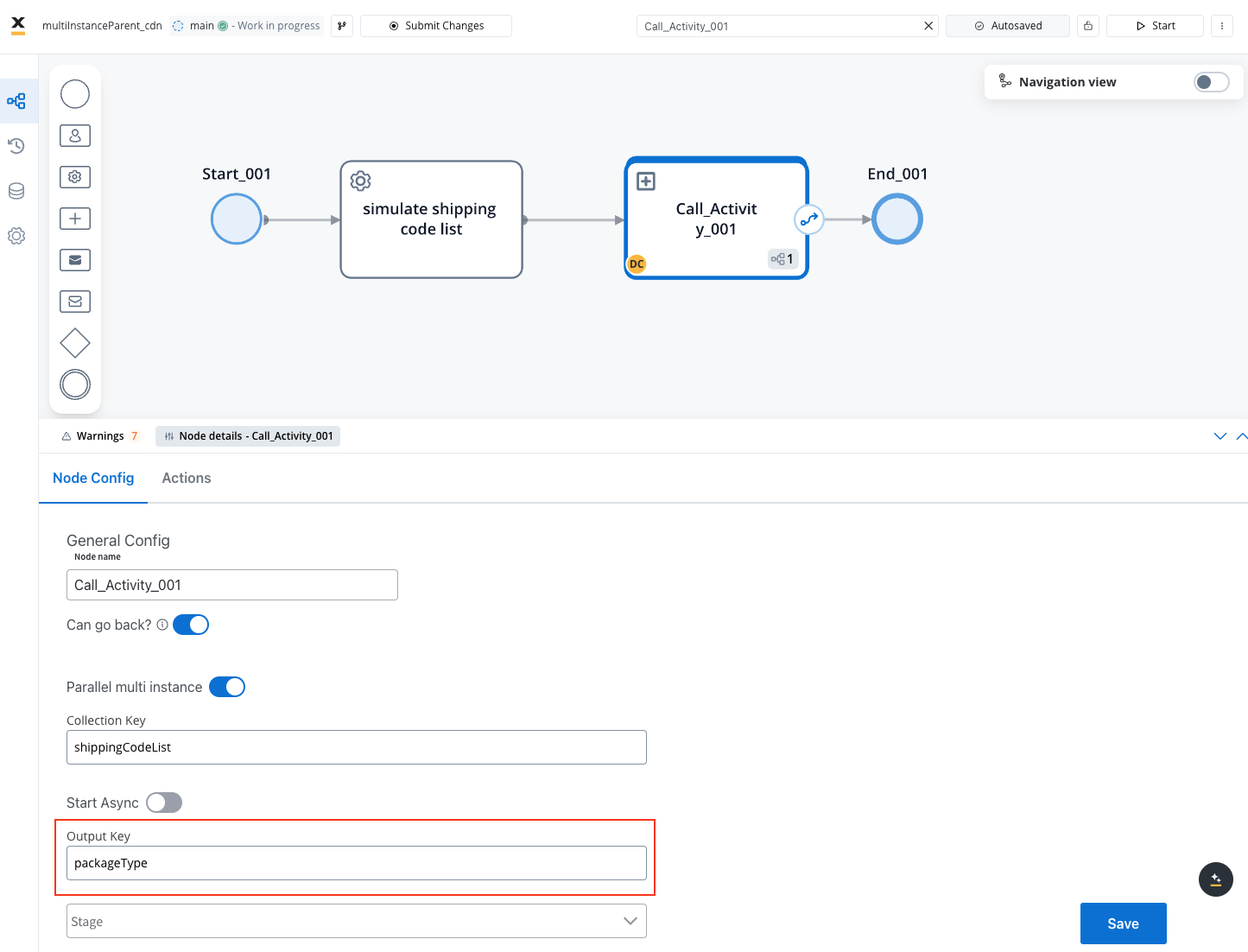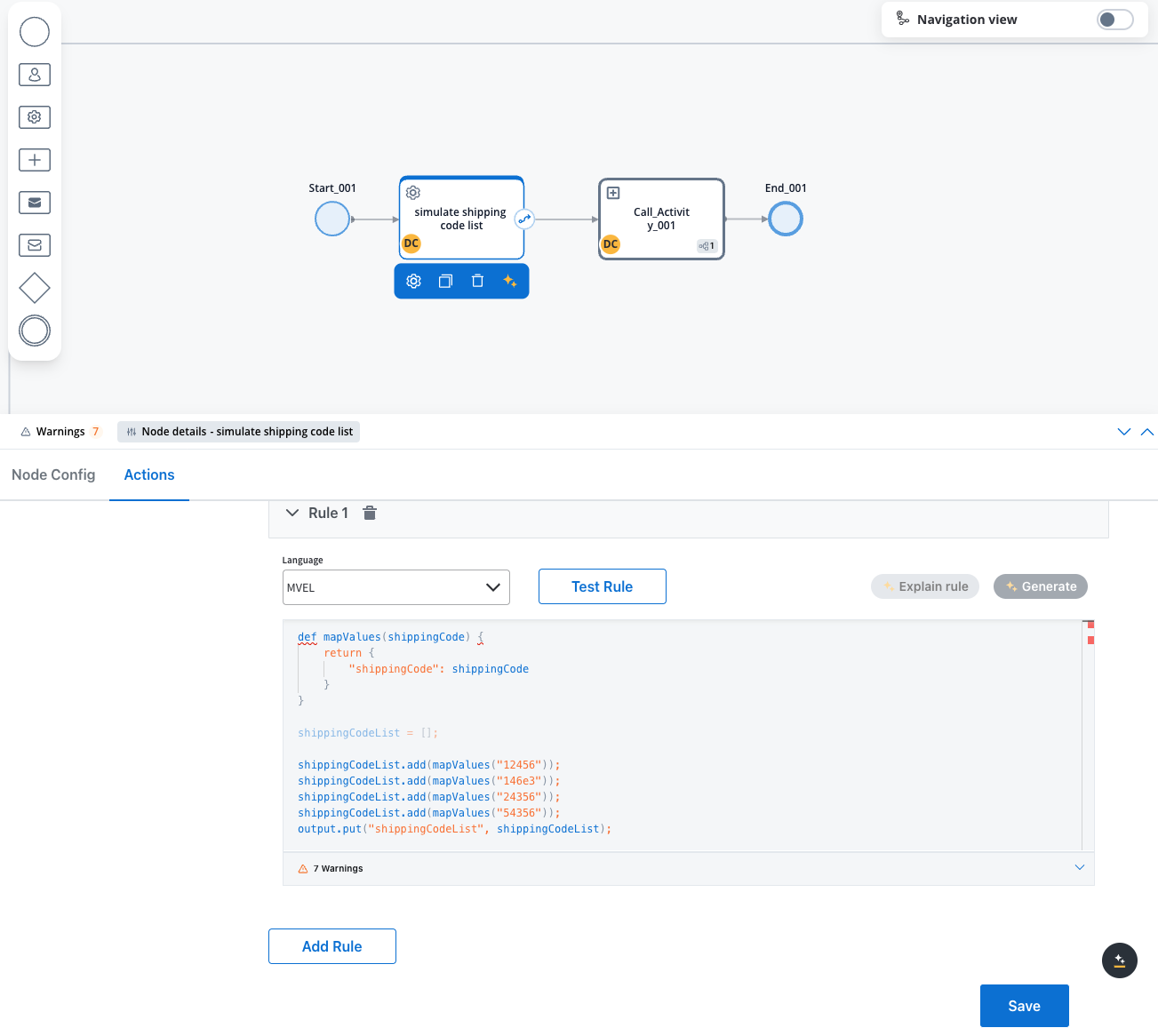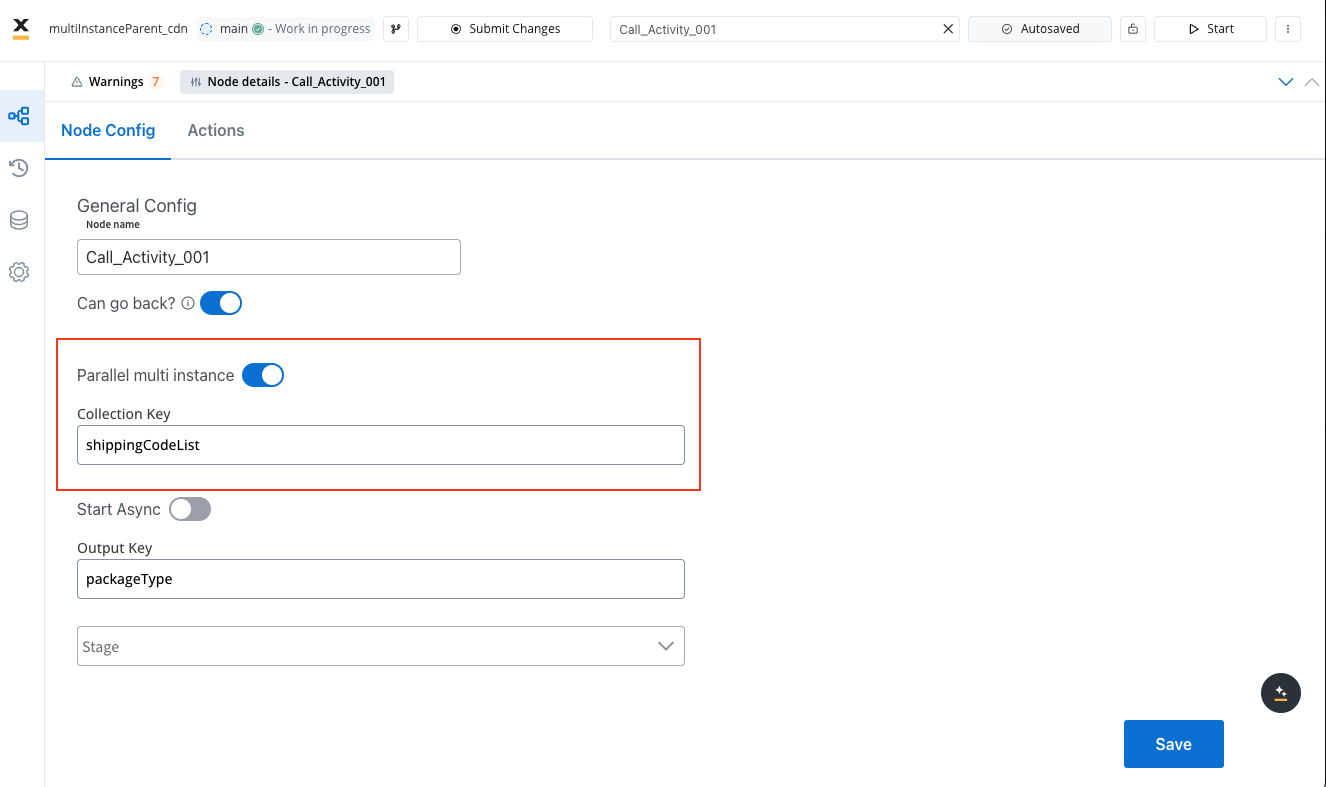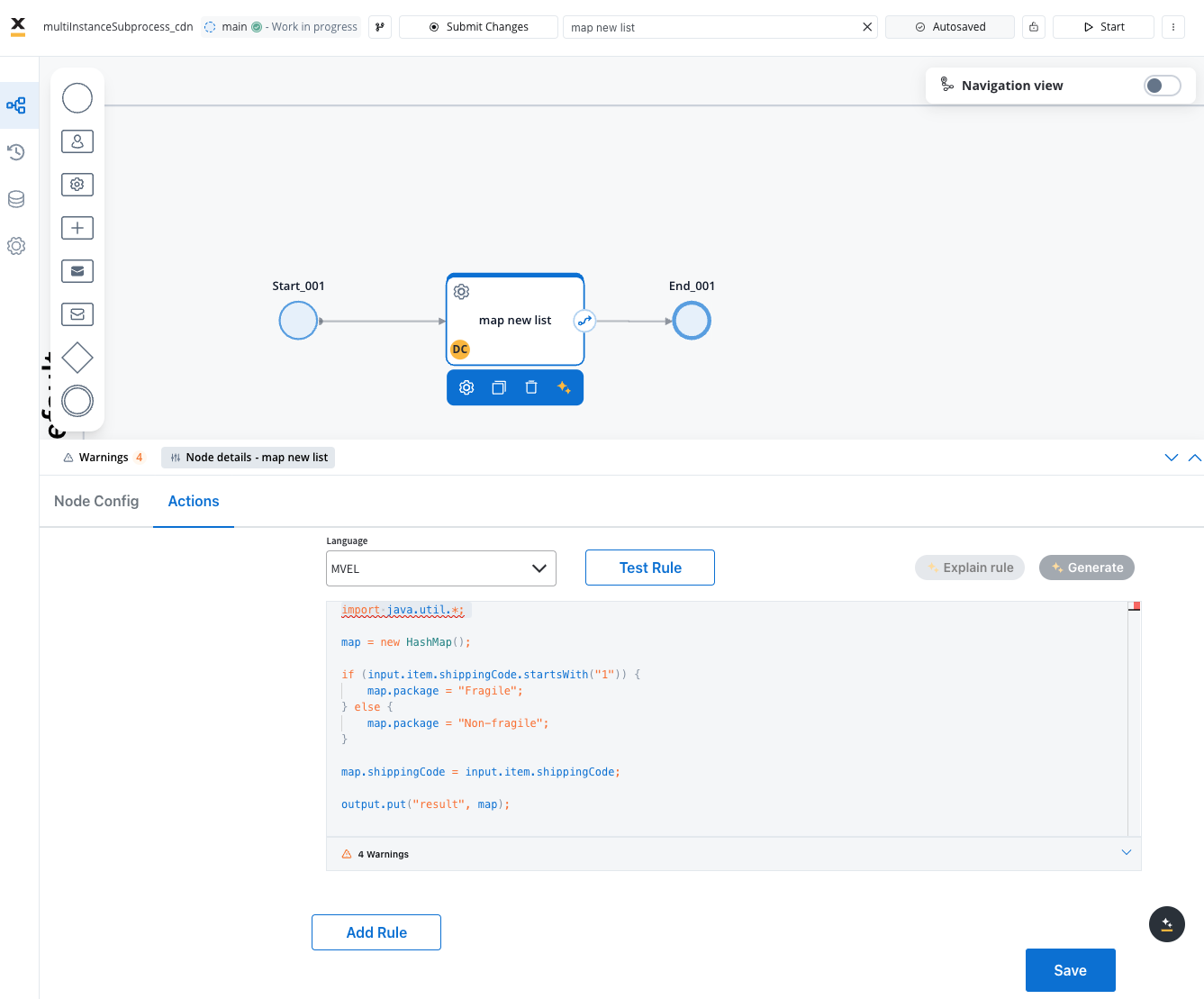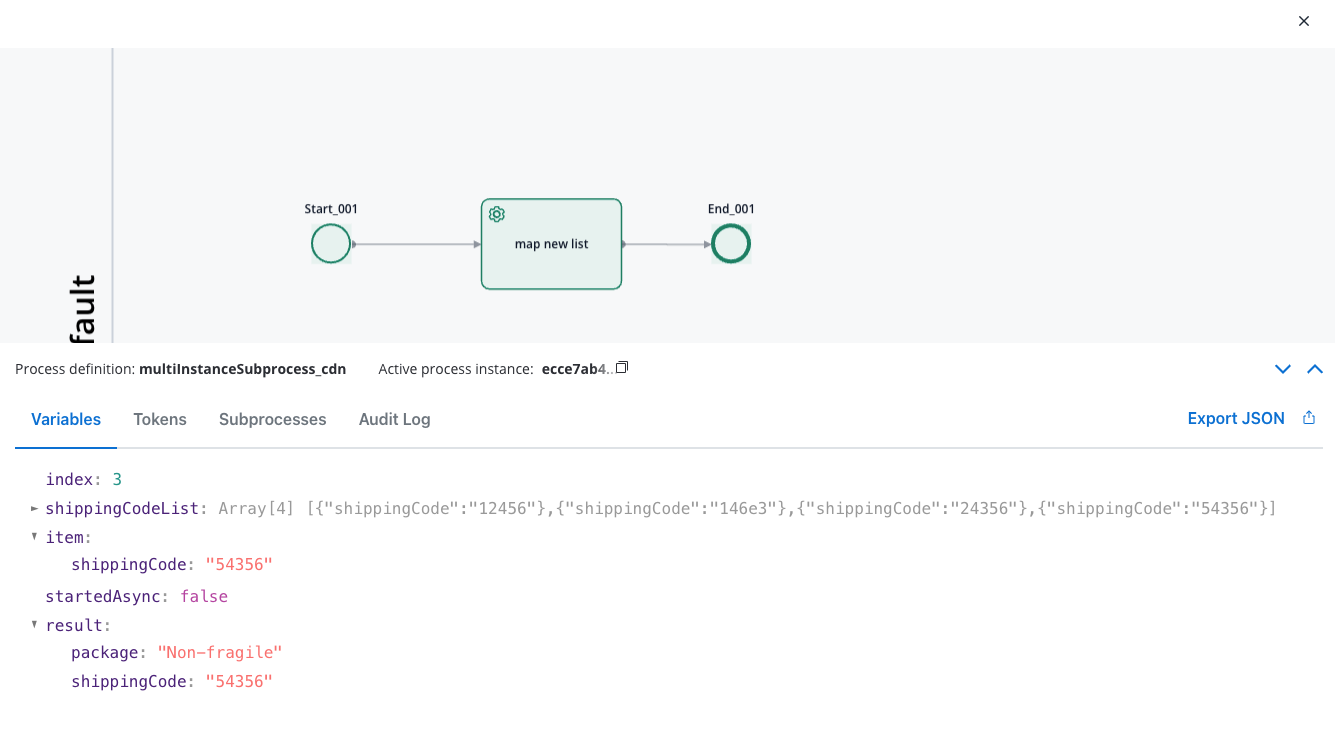There are cases when extra functionality is needed on certain nodes to enhance process management and execution.
The Call Activity node contains a default action for starting a subprocess, which can be started in two modes:
- Async mode: The parent process will continue without waiting for the subprocess to finish.
Select if this task should be invoked asynchronously. Make tasks asynchronous if they cannot be executed instantaneously, for example, a task performed by an outside service.
- Sync mode: The parent process must wait for the subprocess to finish before advancing.
The start mode can be chosen when configuring the call activity.
If the parent process needs to wait for the subprocess to finish and retrieve results, the parent process key that will hold the results must be defined using the output key node configuration value.
Starting multiple subprocesses
This node type can also be used for starting a set of subprocesses that will be started and run at the same time.
This is useful when there is an array of values in the parent process parameters, and a subprocess needs to be started for each element in that array.
Business rule example
Below is an example of an MVEL business rule used to generate a list of shipping codes:
import java.util.*;
def mapValues(shippingCode) {
return {
"shippingCode": shippingCode
}
}
shippingCodeList = [];
shippingCodeList.add(mapValues("12456"));
shippingCodeList.add(mapValues("146e3"));
shippingCodeList.add(mapValues("24356"));
shippingCodeList.add(mapValues("54356"));
output.put("shippingCodeList", shippingCodeList);
When designing such a subprocess that will be started in a loop, remember that the input value for the subprocess (one of the values from the array in the parent process) will be stored in the subprocess parameter values under the key named item. This key should be used inside the subprocess. If this subprocess produces any results, they should be stored under a key named result to be sent back to the parent process.
Subprocess business rule example
Here’s an MVEL business rule for a subprocess that processes shipping codes:
import java.util.*;
map = new HashMap();
if (input.item.shippingCode.startsWith("1")) {
map.package = "Fragile";
} else {
map.package = "Non-fragile";
}
map.shippingCode = input.item.shippingCode;
output.put("result", map);
Result (one of the subprocess instances)
The result shows the output of a process that has handled multiple shipping codes. The structure is:
{
"package": "Non-fragile",
"shippingCode": "54356"
}

